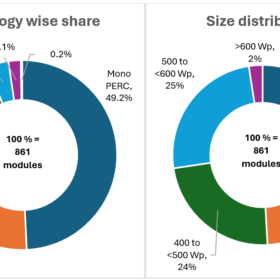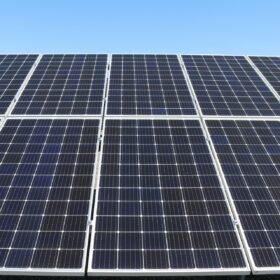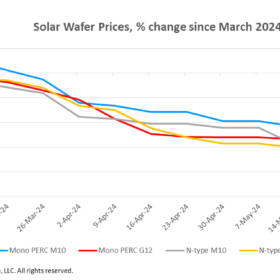Grid upgrades needed to support Asia Pacific’s renewable energy expansion
A regional grid would allow the region to share excess renewable energy and facilitate the importing of renewable energy to meet domestic decarbonization goals in economies with limited renewable resources.
72% of solar PV modules enlisted in the latest ALMM list are of high-efficiency technologies
Out of the 861 solar PV modules currently enlisted in ALMM, the majority (around 72%) are from high-efficiency technologies. With a 49% share, mono PERC is the most dominant module type in ALMM. Encouragingly, emerging PV module technologies such as n-type TOPCon, Bifacial n-type TOPCon, and Bifacial Mono PERC also account for a significant share of around 22.5%.
IEC lays ground for flexible silicon solar module standards
In its second monthly column for pv magazine, the IEC highlights the research on flexible crystalline silicon solar cells led by researcher Zhengxin Liu, the Vice Chair of IEC Technical Committee 82, which prepares standards for solar PV energy systems.
Addressing the interconnected challenges of land degradation and climate change
By forging ahead with solar-powered land restoration initiatives, we can build resilient ecosystems, foster sustainable livelihoods and safeguard our planet for generations to come.
India’s solar energy sector: Challenges, opportunities, and future prospects
India’s solar journey is a tale of turning challenges into opportunities, of harnessing the sun’s boundless energy to light up lives sustainably. On this World Environment Day, India’s solar saga reminds us that with innovation, policy support, and collective will, we can indeed craft a brighter, greener future—one solar panel at a time.
The future of solar energy: How R&D can bridge the gap between supply and demand
Continued investments in research and development, particularly in areas like advanced battery storage technologies and next-generation solar cell materials, coupled with supportive policies and global collaboration can unlock the full potential of solar energy and pave the way towards a brighter, more sustainable future.
Clean hydrogen boom by 2030, but targets remain elusive
The clean hydrogen market must navigate technological, political, and economic uncertainties to realise its full potential.
Solar wafer prices continue to soften, complex international trade situation sparks concerns
In a new weekly update for pv magazine, OPIS, a Dow Jones company, provides a quick look at the main price trends in the global PV industry.
Solar panels in orbit
Space-based solar power generation has the potential to address many of the challenges that terrestrial systems face.
The role of renewable energy in achieving India’s net zero goals
The road to net-zero emissions in India doesn’t require herculean efforts. We can get there by wholeheartedly adopting renewables, investing in innovation and technology, and promoting public-private partnerships to build a better, cleaner, and more sustainable India for generations to come.















